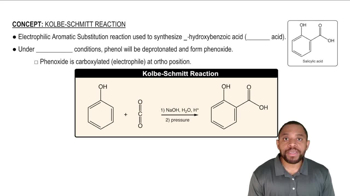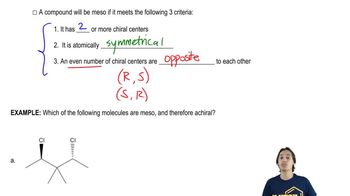Predict the major products of the following reactions, including stereochemistry.
c. cis-pent-2-ene + OsO4/H2O2
d. cis-pent-2-ene + peroxyacetic acid in water
 Verified step by step guidance
Verified step by step guidance Verified video answer for a similar problem:
Verified video answer for a similar problem:



 3:50m
3:50mMaster General properties of syn vicinal dihydroxylation. with a bite sized video explanation from Johnny
Start learning